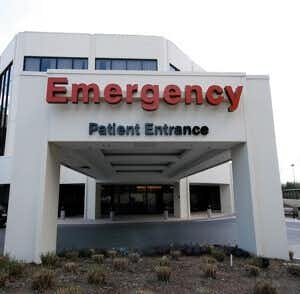
Have you ever had to wait for hours to be seen in an emergency room? Who hasn’t?
A Crowded Emergency Room May Mean Doctors Miss Information:
A new study shows, unsurprisingly, that care may be compromised in overcrowded emergency departments (Stoklosa et al, Emergency Medicine Journal, online Feb. 7, 2018). That is particularly true if doctors must treat patients in a hallway rather than a separate exam room.
Researchers surveyed 440 emergency room doctors. The majority of these physicians said they changed their physical exam practice and took less comprehensive histories when the environment was not private. Clinicians who were frequently required to treat patients in a hallway because of a crowded emergency room said that made it less likely that they could reach an accurate diagnosis.
Crowding in the Emergency Room May Lead to Critical Problems Being Overlooked:
They also reported that they were more reluctant to explore sensitive questions such as domestic violence, child abuse, suicidality or substance abuse unless there was an opportunity for greater privacy. Emergency departments are the first line of care for people under such conditions, so when patients are relegated to a cot in the hallway, no one else may pick up on the underlying problem.
How Crowding Affects Emergency Stroke Treatment:
This is not the first study to indicate delayed diagnoses can result from conditions related to crowding. In 2016, researchers reported on stroke treatment in emergency departments.
When it comes to strokes, doctors say, time is brain. In other words, getting a prompt diagnosis and emergency treatment is crucial for limiting brain damage. According to one study, crowded emergency rooms put people at risk for death or serious disability (Reznek et al, Stroke, online, Nov. 17, 2016).
Crowded Emergency Rooms Mean Delayed Imaging:
In an ideal situation, a patient with symptoms such as a sudden severe headache, one-sided numbness or paralysis, trouble speaking, difficulty seeing or trouble walking should have brain imaging within 25 minutes of arriving at the emergency room. To reduce damage to the brain, experts recommend treatment with clot-busting drugs within three hours of the onset of symptoms. But not everyone should receive such treatment. It is appropriate for a stroke caused by a blood clot in the brain (ischemic stroke), but could make a stroke cause by bleeding into the brain (hemorrhagic stroke) much worse. That is why the imaging is crucial to determine what type of stroke is occurring.
How Crowding Affects Timing:
Crowded emergency rooms may not meet these goals for door-to-imaging time. Researchers reviewed medical records for nearly 500 patients treated for stroke over the course of a year. About 60 percent of the patients got brain scans within 25 minutes.
When the emergency department was crowded, however, it took longer to get patients in for imaging. The number of people waiting there accounted for a significant proportion of the slowdown for the 40 percent of stroke patients whose imaging was delayed.
What Can You Do?
Overall, this is a health system problem that won’t be easily fixed by patients. People who suspect their symptoms might be related to a stroke should act as quickly as possible to call 911 and take an ambulance to the hospital, since this usually triggers a more rapid response by emergency personnel. If there is a choice of hospital, ask the emergency medicine technicians to choose the one with the less crowded emergency department.

